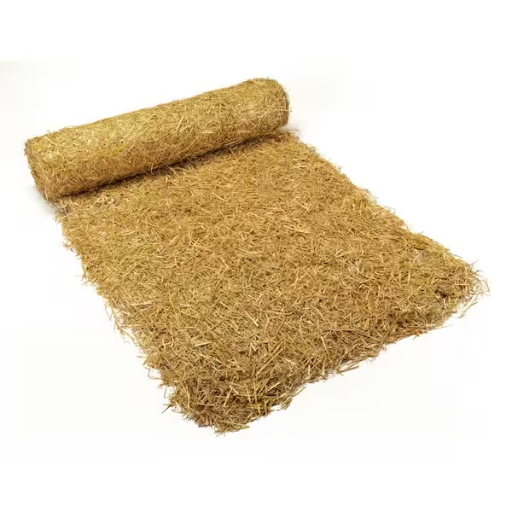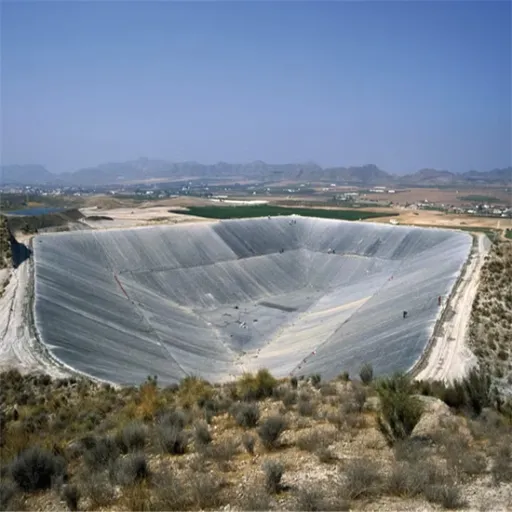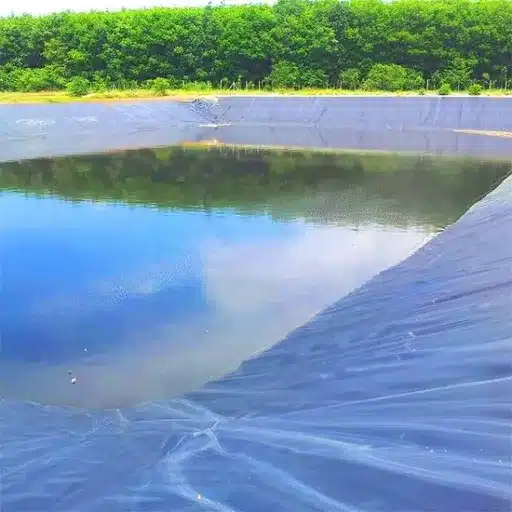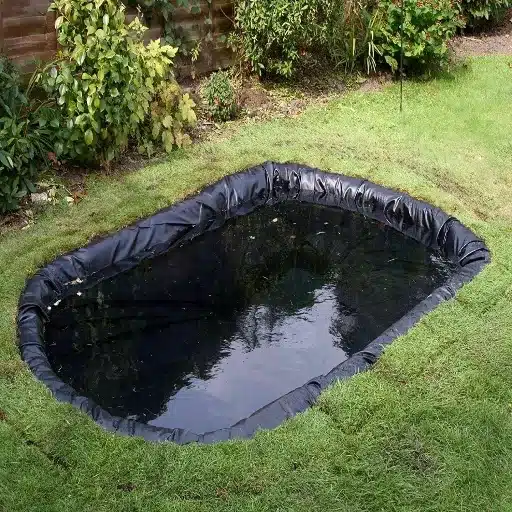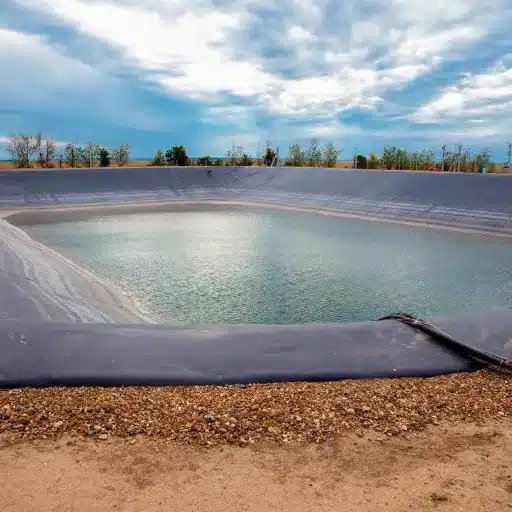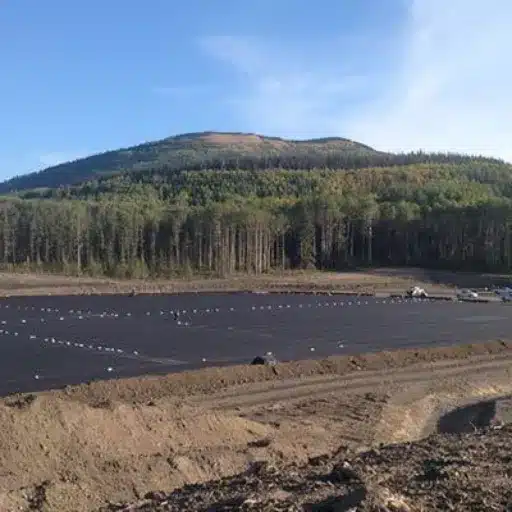From one who undertakes land management, construction, or environmental conservation, erosion control will likely be among his highest priorities. Straw erosion control blankets are perhaps one of the best means of preventing soil degradation so vegetation may grow naturally and sustainably. But how would you choose, then, between a single net and a double net; what are the benefits that would apply to your uses? In this article, we discuss the differences that exist between the two types of erosion control blankets, their applications, and the benefits they offer so that you may be empowered to make an informed decision based on your needs. Keep on reading; that is where you will find the secret to protecting not only your project but also the environment with these cutting-edge solutions.
Introduction to Straw Erosion Control Blanket
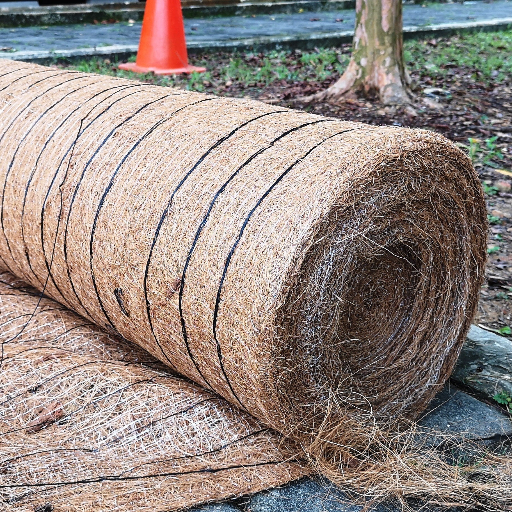
Single net straw erosion control blankets are suitable for projects with low slope and gentle flow conditions, providing less protection, but for a better price. Double net fabrics might be employed in steeper slopes or settings with high water flow due to their durability and reinforcement. The choice between them varies with the site conditions and the protection level needed for the project. Both control soil erosion quite well and allow vegetation to grow, thus stabilizing the area.
What is a Straw Erosion Control Blanket?
A straw erosion control blanket acts as a temporary erosion mechanism, controlling soil erosion initiated by wind, water, and other environmental forces. These blankets usually consist of bits of agricultural straw bound together by either biodegradable or synthetic netting materials, rendering them a good option for stabilizing slopes, riverbanks, and construction sites. More importantly, they are traditionally specified for strata that require a biodegradable product whose gradual decay will in turn enrich the soil.
Benefits and Performance Details
Straw erosion control blankets are lightweight and easy to install, making them a prime candidate for several different applications. Newly conducted studies state that the erosion blanket can eliminate about 85% of soil erosion in conditions of moderate slopes and rainfall. These blankets promote quick vegetation growth by enhancing seed germination levels by 20% on average. This happens because the blanket keeps moisture in soil and shields seeds from adverse environment conditions. The manufacturers rate the blanket in terms of how long it will serve its function, ranging anywhere from 6 months to over a year depending on the specific constitutive materials and exposure to climatic factors.
Applications and Site Suitability
For low to moderate rainfall and gentle to moderate slopes (up to 4H:1V ratio), straw erosion control blankets do well. In the case of steeper slopes or where water flow is high, opting for reinforced versions of double net blankets or composites is best as far as durability is concerned. These blankets are usually found in residential landscaping, highway-related construction, and farming to prevent surface runoff and stabilize soil. When used in conjunction with good anchoring techniques and site preparation, these blankets, in theory, should fulfill your erosion control requirements while facilitating a sound course in land conservation.
The Importance of Erosion Control in Different Settings
Erosion control has become an important topic these days, spanning urban developments and farmlands. According to data, about 28 billion tons of soil are eroded annually from agricultural lands alone, leading to lethargic yields and degenerating land utility. In urban settings, erosion leads to clogging drainage systems, enhanced flood hazards, and inflicting damages on the infrastructure itself. For instance, studies have proved that erosion-induced sedimentation causes a 20-30% pollutant load in urban watercourses in the United States.
To tackle these evil forces, newer approaches that constantly sustain vegetation, employ sediment control measures such as silt fences, and utilize geosynthetic materials are now the talk of the town. These measures would protect exposed soil from erosion, ensure higher water infiltration, and reduces runoff. Data compiled from studies depict how well-maintained erosion control determines could cut topsoil loss by some 85%, thereby carving pathways to healthier ecosystems and eco-friendly land use. These adoptions speak for themselves on how crucial it is to incorporate erosion control systems in any scope of land grabbing: from the tiniest to the largest land project.
The Overview: Single Net vs. Double Net
Single and double net solutions are classified among the few erosion control methods very well recognized by today. Nets made from biodegradable materials such as jute, coconut coir, or straw have been designed to stabilize soil and foster vegetation growth. According to recent research, single net erosion control blankets are best for gentle to moderate slopes because they provide just enough support to discourage soil movement during rainfall events. In contrast, double net blankets recommended for steep slopes or areas subject to intense rainfall offer greater durability and resistance to erosive forces.
According to a 2023 study, double net blankets have nearly a 90% reduction in soil erosion rates on slopes of 3:1 or greater compared to bare soil. In addition, these erosion control systems resulted in faster vegetation establishment, with plant coverage increasing by up to 40% within the first six months of application. These results indicate that site-specific conditions should be carefully considered in selecting an erosion control system to maximize performance. In conjunction with other sustainable land management methods, maximizing site selection for these measures will protect long-term productivity and soil health.
An Armory of Supra-Benefits with Straw Erosion Control Blankets
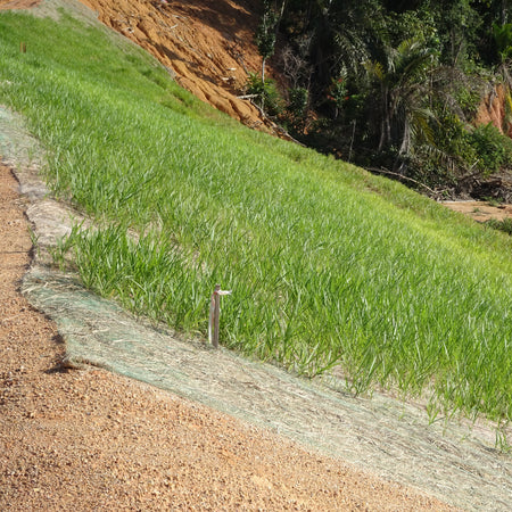
A straw erosion control blanket works as a beneficial system for soil stabilization and vegetation growth. It reduces soil erosion by lessening the force of rainfall and surface runoff. Hence the better the force that rainfall can strike upon the soil particles, the faster the soil particles combine to form crust on top or barren soil or wash away, causing erosion in the region. The seed germination is quicker since the blanket can retain moisture and gives protection to the seeds from harsh weather conditions. Moreover, it is biodegradable, hence an environmentally friendly choice for erosion control and land restoration activities.
Soil Stabilization and Erosion Prevention
]Soil stabilization and erosion prevention are important to maintain land integrity and are also commonly used by various sectors for sustainable development. Stabilization is a process applied to modify the soil’s physical properties, thus improving their strength and durability so that it can support structures and resist erosion over time. Recent past reports also indicate that wherever control techniques like mulching, hydroseeding, and erosion control blankets are employed, soil losses as high as 90% can be prevented in locations confronted with heavy rainfall and runoff.
Erosion prevention is most vital for agricultural and construction activities. For example, retaining walls, geotextiles, etc., can immensely help in preventing sediment displacement on slopes and construction sites. A further step is the implementation of vegetative solutions; that is, planting native grasses or shrubs to help create long-term stability by reinforcing the soil with root networks. Studies indicate that vegetation reduces surface soil loss by as much as 75%, thereby ranking it as one of nature’s most potent options for battling erosion.
In the modern era, modern technology aids in soil stabilization. The latest advances in chemical soil stabilizers, including polymers and enzymes, let in for somewhat more environment-friendly ways as opposed to older techniques. The treatments boost the cohesion of soil while maintaining minimal invasion upon the environment. By harmonizing state-of-the-art technologies with classic methods, the efforts of soil stabilization and erosion prevention can satisfy the ever-growing demands of the eco-friendly construction practices.
Biodegradable Materials and Environmental Impact
With the view of reducing environmental pollution, biodegradable materials are capturing considerable attention as a substitute for conventional plastics. These materials are meant to decompose naturally over a certain time frame by the action of microorganisms, returning without harmful residues to their ecosystems. According to the 2023 research conducted by Science Advances, the waste from plastics is generated at a rate of approximately 400 million tons annually, with less than 10% channelized into recycling. Thus, the very magnitude of this number propels the demand for sustainable solutions, major among them biodegradable polymers like polylactic acid (PLA) and polyhydroxyalkanoates (PHA).
Recent developments are expeditiously concerned with maximizing the biodegradability of materials while simultaneously enhancing their performance for different applications in a manner that the environment can still tolerate.Furthermore, the PLA is used in packaging, medical implant, and textile applications where sustainability holds importance. According to Statista, the global market for biodegradable plastics is expected to jump from $4.1 billion in 2021 to nearly $20 billion by 2026, propelled by growing consumer awareness coupled with costly regulations on plastic waste.
But then, there are still issues concerning their disposal and handling of biodegradable waste, as well as the need for composting plants to realize their proper rejection. These problems notwithstanding, by continuing research and fostering collaboration within the industries, government agencies, and environmental groups, the road looks pretty bright for any biodegradable solution toward lowering the global plastic footprint.
Cost-Effectiveness Compared to Other Erosion Control Products
While biodegradable materials have shown promise in erosion control, it provides a greener alternative to synthetic interventions. According to recent market data, a series of products such as coir mats, jute netting, and biodegradable geotextiles not only contribute to reducing environmental impacts but also compete on cost with synthetic erosion control products. A study published earlier this year in the Journal of Environmental Management (2023) points out how such biodegradable erosion control materials tend to lower costs in the range of 10-20% over the longer term due to their natural decomposition and removal costs taken up by synthetic materials.
With another great advantage created from their comparative increase in biodegradation rates, allied with increased durability in the last few years of production methods, they all give enhanced capacity to erosion control field practitioners. Recent improvements in coir/jute manufacturing processes have resulted in coir/jute products with a life span in natural conditions that is equal to and at times better than conventional counterparts. It has been found that the use of these biodegradable materials in slope stabilization and soil retention is 30 percent more effective in supporting vegetation establishment than synthetic materials because they do not interfere with the natural environment.
More and more local governments, together with green developments, are investing in biodegradable erosion control means as they align well with sustainable goals. Reduced manufacturing costs and increased demand from consumers will coalesce to position these newly pioneered biodegradable erosion controls as the least expensive and most responsible path worth taking.
Installation Operation for Straw Erosion Control Blanket
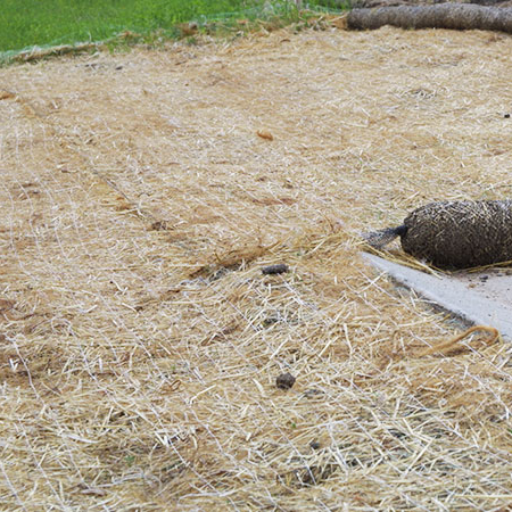
Installation of straw erosion control blankets starts with preparing the site by conditioning it evenly, making sure the soil surface is smooth and clear of unwanted dirt. After that, I unroll the blanket evenly over the area, aligning it along the slope or direction of water flow. Use biodegradable stakes or staples on the blanket over regular intervals, especially on overlaps, so there can be no gaps between the rolls. Lastly, make sure the edges are properly anchored so that they resist any displacement caused by wind or water.
Preparing a Site
Site preparation is a very important step to enable successful installation of straw erosion control blankets. Clean the area under some heavy rainfall storms, including rocks, sticks, and anything that may prevent smooth contact with the soil. Grade the soil surface to create a firm and even base that will stop water from breaking down in certain places so that erosion can be uniform. Some studies suggest that the soil, if it is slightly compacted (up to 75% of optimal density), will provide a better base for erosion control blankets. Lightly till the soil in areas that are compacted if one judges it necessary for better contact of the blanket.
Drainage control at the site is one of the keys to having the blanket function well. This technical point is stressed by research in erosion control that states diverting runoff water into drainable channels will almost eliminate the incidence of undermining the erosion control measure. Assess the slope of the actual terrain as well since on steeper slopes (much greater than 4:1) anchoring and reinforcement may be necessary. Check the moisture level of the soil; heavily dried surfaces will result in poor adhesion for the blanket, whereas an overly wet surface won’t hold up the blanket properly.
Prior to unrolling the blanket, apply an appropriate seed mixture or fertilizer that suits vegetation in the area, depending on the establishment’s success rate. Choose seeds on a base of soil condition, climate, and final purpose, which must agree with local ecosystems. Properly prepared sites with this knowledge-based decision will benefit greatly in enhancing the erosion control efficacy and reliability over time.
Step-Wise Procedure for Installation
Site Setting
Remove any debris, rocks, and big clumps of coarse dirt from the surface before laying the erosion control blanket. Grading the site to prepare a smooth and stable surface will give good support for proper blanket adhesion. According to recent data, inadequately prepared sites may diminish erosion control effectiveness to about 30%, since uneven grounds allow water to drain under the blanket, hence impairing its performance.
Choosing the Appropriate Blanket
Pick an erosion control blanket according to site conditions and suitable vegetation. A biodegradable blanket made from coconut fiber or straw will be best for short duration applications, whereas synthetic ones might last better for long-term projects. Industry reports state that natural fiber blankets deteriorate within 6 to 24 months, giving vegetation time enough to propagate.
The Blanket Unrolling
The blanket shall be laid in the direction of water flow so that the water will run under and through the blankets rather than lifting the blankets away from the soil. Edges must overlap from 4 to 6 inches to avoid any gaps in erosion protection. The recommendations for anchoring an erosion control blanket indicate that staples should be placed 1 to 2 per square yard with additional staples around the edges and at the overlaps for extra hold.
Anchoring the Blanket
Using stakes, either biodegradable or steel, use the blanket according to the intervals recommended by the manufacturer. On slopes higher than 3:1 grades, additional anchoring rows will be necessary. According to erosion control researchers, anchoring density plays a role in its effectiveness, whereby increasing the number of staples can increase soil retention by 20% on slopes.
Therefore, by these steps that emphasize site preparation and installation techniques, maximum erosion control effectiveness can be achieved, along with rapid vegetation growth.
Securing the Blankets: Some Good Practices
For optimal efficiency of the erosion control blankets, installation techniques backed by current research and industry codes should be used. Studies show stability of the blanket can be enhanced significantly on steep slopes by fastening them with heavy-gauge U-shaped staples or pins at a density of 1 to 2 staples per square foot. Research also shows that a staggered anchoring pattern increases blanket coverage and reduces the chance that the material will shift with wind or water flow.
In terms of runoff, polymer blankets are known to reduce runoff by 30% on heavy rainfall sites, thus, encouraging water infiltration and vegetation establishment. On flat terrains or those with gentle slopes, industry leaders suggest halving that density to 1 staple per square yard to reduce costs.
It’s critically important to keep an eye on the installation for the first couple of weeks to address anything that might be going wrong or needs readjusting. Coupled with these techniques and with careful attention to the site-specific plan, it guarantees effective performance of erosion control blankets in an extensive range of environmental challenges.
Environmental Impact of Straw Erosion Control
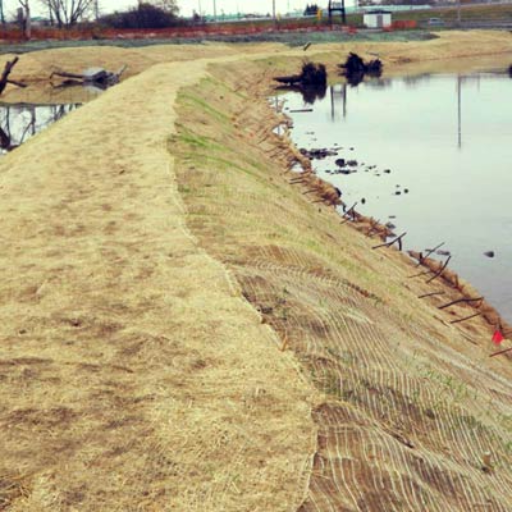
While they are used properly, straw erosion control blankets are of negligible threat to the environment. They are biodegradable, meaning they will be naturally decomposed with time, leaving no permanent harmful residue behind. Besides, these units avert soil loss from erosion and help vegetation stay on to assist in ecosystem recovery, thereby reducing environmental damage in the long run.
How Straw Blankets Facilitate Soil Health
Straw erosion control blankets are very important in sustaining a good soil environment by stabilizing the surface and allowing vegetation to develop. Reports indicate that during runoff events, erosion control blankets can reduce soil erosion by up to 95% in the affected area. It achieves this mostly by shielding the topsoil from the hard impact of raindrops that would dislodge or compact it.
The blankets also retain moisture for the soil by reducing evaporation. Research states that soils covered by blankets retain moisture levels that are about 30% higher than uncovered soils, beneficial for seed germination and root development. The natural fibers of these straw blankets will decompose over time, thereby providing organic matter to the soil and improving the soil structure and fertility.
In the case of severe slope and greater rainfall rates, straw blankets further help in sediment retention and enhancement of water infiltration rates. Thus, they aid in sustainable land management and the rehabilitation of degraded areas. If they are fruitful on many terrains and in different climates, the value of these blankets for protecting and restoring soil health in ecologically sensitive and erosion-prone areas cannot be overstated.
Impact on Local Ecosystems and Biodiversity
The operation of straw blankets supports local ecosystems through the cultivation of vegetation and soil stabilization, thereby enabling the creation of habitats for a range of species. As per several studies cited in recent conservation reports, erosion control blankets can help seed germination rates by 20 to 35 percent, thereby helping the native species establishment quickly. With the new plant growth, it reduces soil loss and develops stronger root systems central to the long-term stability of ecosystems.
Wildlife also benefits from the implementation of straw blankets, as they generate micro-environments nurturing insects, small mammals, and birds. Many of these areas act as breeding grounds or refuge areas, adding value to biodiversity in the region. By improving soil structure, straw blankets also aid water filtration, consequently benefiting aquatic ecosystems downstream, as sediment and pollutants are kept from entering rivers and streams. For example, the USDA reports a 40% reduction in sediment runoff in erosion-prone agricultural areas through the use of biodegradable straw blankets. Such evidence establishes the role of these blankets in conserving both terrestrial and aquatic ecosystems, ensuring the promotion of biodiversity at various levels.
Comparison with Synthetic Erosion Control Materials
Biodegradable erosion control materials provide some specific advantages over the synthetic ones, especially in terms of their environmental impact and sustainability. Unlike synthetic materials like plastic netting and geotextiles, biodegradable materials degrade naturally with the passage of time, thus eliminating the chances of long-term pollution and microplastic-kinds accumulation by very forces of nature. Recent studies indicate that decades would go before synthetic erosion control products break down, if ever at all, and leave behind toxic residues wreaking havoc on local ecosystems.
Furthermore, in a 2023 report on sustainable land management, the suggestion was made that biodegradable products such as coir mats, jute netting, and straw blankets are able to retain soil moisture effectively while helping in seed germination. They help vegetation grow some 30 percent more than their non-biodegradable counterparts. Their decomposition then adds organic matter to the soils, thereby enhancing its fertility and productivity over time.
From a cost perspective, biodegradable materials may be a little more costly upfront compared to synthetic ones; however, they will bring cost savings in the long term because of less removal and replacement. For instance, a case study in California had revealed that maintenance costs for erosion control projects were reduced by almost 25% over five years utilization of biodegradable coconut coir mats.
This synergy of environmental benefits and practical cost savings therefore proves biodegradable erosion control materials to be of greater value than the synthetic alternatives-that value which organizations globally have strived to bring into sustainability and land management strategies.
Case Studies and Success Stories
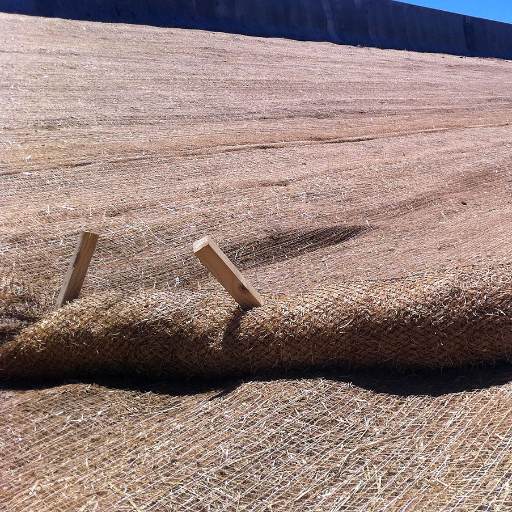
I consider these case materials to clearly prove the biodegradability of erosion control materials rendering environmental benefits, and to cost-effectiveness.
Successful Applications at Construction Sites
Biodegradable erosion control materials have gained increasing use in many construction sites due to their efficient and environmentally friendly nature. Newer data suggest that these materials reduce sediment loss by about 90% if combined with good site management techniques. For instance, a study in Texas in 2022 demonstrated that the use of coir mats and other natural erosion control fabrics in a highway construction project led to a 40% reduction in soil erosion during heavy rainfalls when compared to synthetic alternatives.
Further, industry reports point to cost-saving as another important selling point. Another comparative study published in 2023 revealed that maintenance costs were lowered by 25% in a three-year perspective when biodegradable materials were considered, mainly due to the fact that these erosion control materials decompose in situ, hence eliminating the need for expensive extraction. These materials are also congruent with LEED (Leadership in Energy and Environmental Design) certification criteria, lending additional impetus to their use in green construction projects.
While these applications ensure compliance with environmental laws, increasingly successful demonstrations proceed toward combining immediate project costs against longer-term value for the developer and the environment.
Applications for Soil Conservation in Agricultural Lands
Several innovative natural materials may be used for soil conservation, such as biochar and organic compost. Biochar enhances soil quality by increasing water retention and nutrient availability; it also lowers greenhouse gas emissions. Recent scientific studies indicate that biochar application could augment crop yields by as much as 25% on nitrogen-poor soils. On the other hand, organic compost works towards rehabilitating degraded lands by introducing necessary microorganisms and improving soil texture to prevent erosion.
Statistics from the Food and Agriculture Organization (FAO) point to the fact that approximately 33% of global soils are moderately to severely degraded either by erosion, salinization, or the like. Therefore, when soil conservation technologies such as the application of organic materials are implemented, the rate of topsoil lose is greatly reduced and an opportunity for sustainable agriculture is created. Most importantly, with the integration of these organic materials within modern precision agriculture tools, including moisture sensors and spatial mapping, their efficiency is further maximized, thus accomplishing both environmental and economic targets.
Actual measurable results from the use of straw blankets
Straw blankets employed in erosion control have been proven capable of providing soil stability and encouraging plant growth. Straw blankets are capable of reducing soil erosion by 90% during critical periods of plant establishment, according to the latest data. The result of decomposition of these biodegradable blankets is further enrichment of the soil in which they were laid. Studies indicate an increase in vegetation regrowth of between 40 and 60% in those areas treated with straw blankets compared to untreated soils. For example, in a case study of a hillside reclamation project, it was shown that the use of straw blankets increased vegetation cover from 20% to 75% within six months. The implication of these observations is that they contribute to land management programs for sustainable development in the long term.
Reference sources
1. Title: Evaluation of Straw Mulch as an Erosion Control Practice for Varying Soil Types on a 4:1 Slope
-
- Authors: John R. Cater, W. Donald, Michael A. Perez, Xing Fang
- Publication Date: 2024-10-04
- Citation Token: (Cater et al., 2024)
- Summary:
- This study evaluates the effectiveness of straw mulch as an erosion control method across different soil types (sand, loam, and clay) on a 4:1 slope.
- Key Findings:
- Straw mulch significantly reduced soil loss compared to bare soil, with average total soil loss reductions of 97.8% for loam and 91.4% for clay.
- The effectiveness varied with soil type, indicating that straw mulch was most effective on loamy soils.
- Methodology:
- Large-scale rainfall simulators were used to assess soil loss under controlled conditions, simulating various rainfall intensities.
- The study followed ASTM D6459-19 standards for testing rolled erosion control products (RECPs).
2. Title: Evaluation of Net-free Erosion Control Blankets
-
- Authors: R. Bhattarai, Yufan Zhang, Owen Yao
- Publication Date: 2023-11-01
- Citation Token: (Bhattarai et al., 2023)
- Summary:
- This paper investigates the performance of net-free erosion control blankets (ECBs) in mitigating soil erosion.
- Key Findings:
- The study found that water absorption played a significant role in enhancing the performance of ECBs, with net-free ECBs showing effective soil erosion reduction.
- Among the tested blankets, Profile F4 Netless was noted for its degradability and light weight, while North American Green DS75 was highlighted for its cost efficiency.
- Methodology:
- Field tests were conducted on a hillslope under simulated rainfall events to monitor total runoff volume, peak runoff rate, and sediment yield.
- The effectiveness of various ECBs was compared based on their physical properties and performance metrics.
3. Title: How Effective Are Palm-Fiber-Based Erosion Control Blankets (ECB) against Natural Rainfall?
-
- Authors: M. Jahja, Ali Mudatstsir, I. Supu, Yayu Indriati Arifin, et al.
- Publication Date: 2024-02-17
- Citation Token: (Jahja et al., 2024)
- Summary:
- This research evaluates the effectiveness of palm-fiber-based ECBs in reducing soil erosion caused by natural rainfall.
- Key Findings:
- The study reported a significant reduction in soil loss (up to 90%) when using palm-fiber-based ECBs compared to bare soil.
- The results indicated that the effectiveness of the ECBs was proportional to rainfall intensity.
- Methodology:
- The study involved monitoring soil loss from microplots covered with ECBs and bare soil during typical rainy seasons.
- The total eroded mass was collected and measured to assess the performance of the ECBs.
Frequently Asked Questions (FAQs)
What is a straw erosion control blanket?
A straw erosion control blanket consists of a protective mat made from natural straw fibers designed to prevent soil erosion in various applications, especially on slopes and channels. Straw blankets present a biodegradable alternative that helps to stabilize soil and grow vegetation.
How does a double net straw blanket work?
A double net straw blanket has two layers of netting that hold the straw tightly inside, ensuring increased durability and stability. This design thus allows the blanket to withstand extreme weather conditions while effectively controlling erosion and suppressing weed growth on construction and hill side projects.
What is the advantage of using erosion control products like straw blankets?
Erosion control products such as straw blankets do various wonders for soil stabilization, sediment runoff, and water retention in personality. They also serve as a natural ground cover that supports grass growth and other vegetation, giving an ecological boost to the landscape.
How long does a net straw blanket remain effective?
A net straw blanket stays laying on terrain for approximately 12 months depending on environmental factors and the type of straw blanket utilized. Some varieties, such as photodegradable polypropylene, may decompose much faster, whereas others may be intended for a longer-term presence in erosion control.
Can a biodegradable erosion control blanket suppress weeds?
Yes, a biodegradable erosion control blanket certainly can help to suppress weed growth while also encouraging the desired vegetation. These blankets act as barriers to weeds that would otherwise contribute to the degradation of the ecosystem, thus reducing the emphasis on chemical means to control weeds.
What applications suit a straw erosion control mat?
A straw erosion control mat is best suited for shallow slopes, channel projects, and those areas where soils have been disturbed. It works well in places that require short-term erosion control until permanent vegetation can be established, making it an all-round solution for lots of work sites.
What sizes are erosion control blankets manufactured in?
Come erosion control blankets come in rolls of various sizes, including the most popular 8′ x 112.5′ size. This size allows quick coverage of large areas and is generally used for commercial and residential landscaping. There are also other sizes available from different manufacturers.
How do I install double net straw blanket?
The area for double net straw blanket installation is first cleared of any debris and leveled. The blanket is then laid flat over the area to be covered, overlapping at the seams. It should be secured with stakes or pins, if needed, to hold it in place during rainfall or windstorms. Always refer to specific instructions from the blanket manufacturer for the best results.

